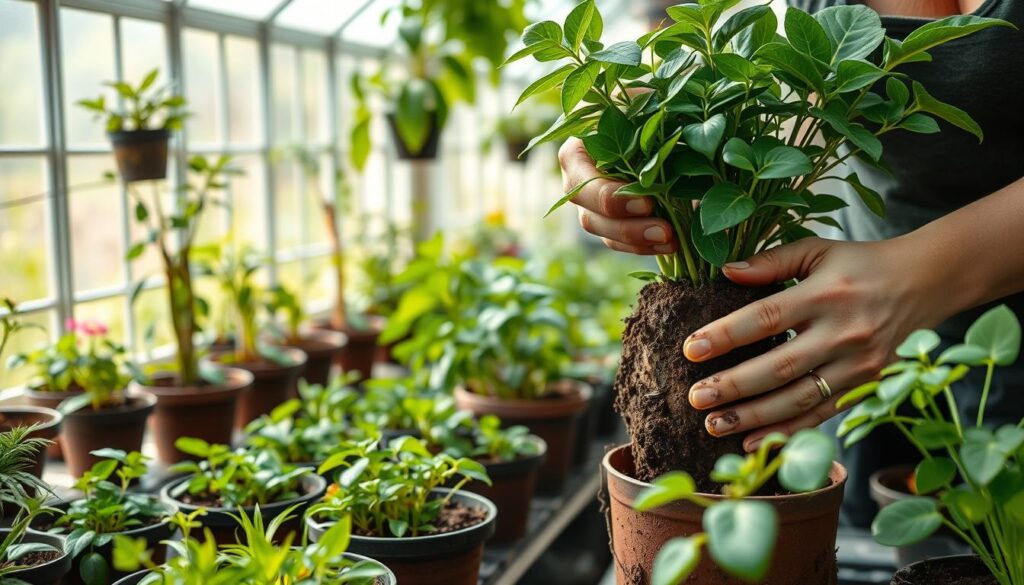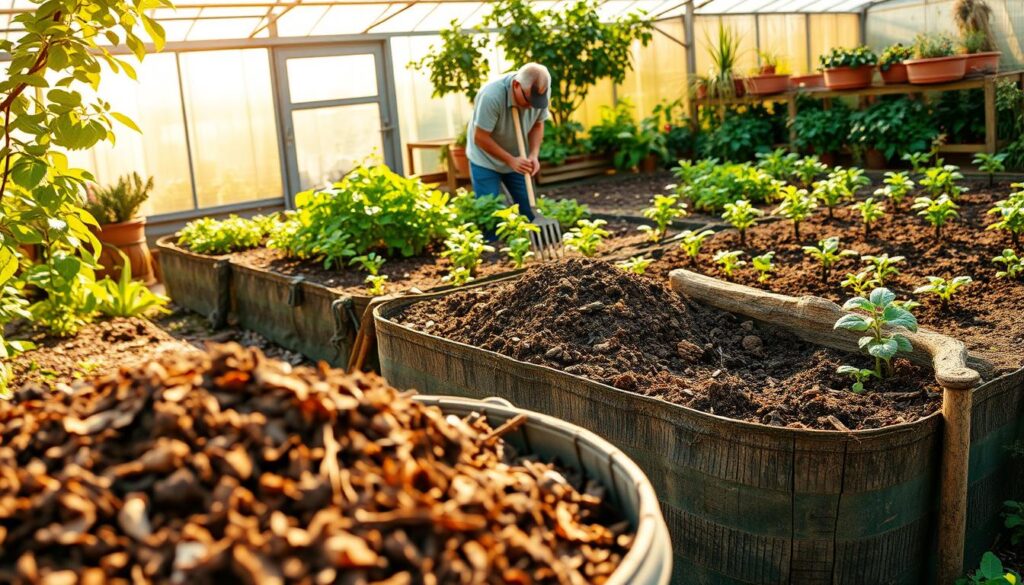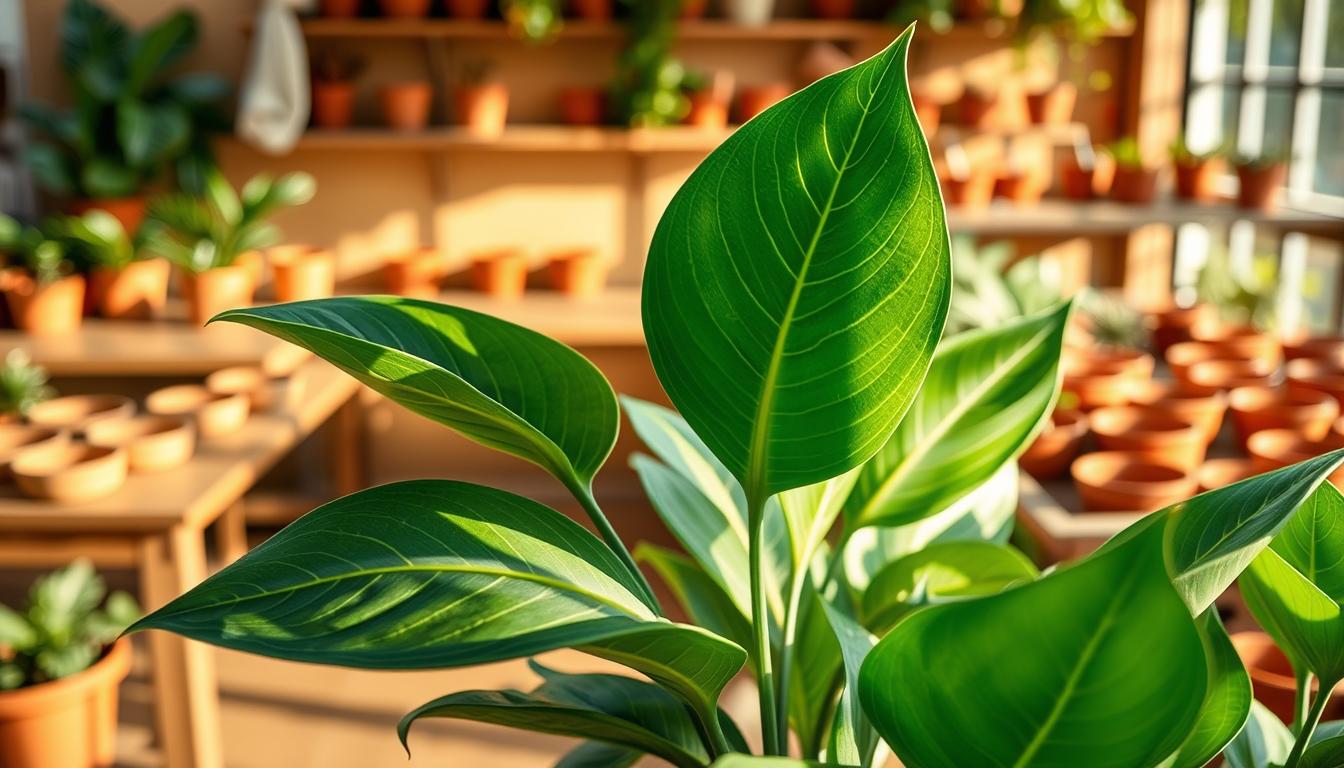Starting your gardening journey is like unlocking a magical secret. At Bay Leaf Nursery, we get the excitement and nervousness of growing your first plants. Everyone starts with curiosity and a love for nature.
Gardening is more than just growing plants. It’s about making a living space in your backyard. Bay Leaf Nursery is here to help, whether you have a small balcony or a big yard. Our tips will turn you into a confident gardener who knows how to grow beautiful plants.
We’ve gathered nine key strategies from years of gardening experience. These tips will help you avoid mistakes and grow a healthy garden. They’re perfect for beginners of all levels, making gardening fun and rewarding.
Table of Contents
Getting Started at Bay Leaf Nursery
Starting your gardening journey can seem daunting. But, with help from a local garden center, you’ll soon be growing beautiful plants. Bay Leaf Nursery guides new gardeners in creating their perfect outdoor space.
Before you start landscaping, it’s important to know your garden’s unique traits. Success depends on evaluating several key factors. These will affect plant growth and garden design.
Understanding Your Garden Space
Every garden is different. To succeed, consider these important elements:
- Sunlight exposure throughout the day
- Soil type and drainage characteristics
- Local climate and microclimate conditions
- Available space and topography
Essential Tools for Beginners
Having the right nursery supplies makes gardening easier and more fun. Here are the must-have tools for new gardeners:
- Quality gardening gloves
- Hand trowel
- Pruning shears
- Watering can or hose
- Sturdy garden spade
Planning Your First Garden Layout
Planning your garden layout is crucial. Think about plant compatibility, growth patterns, and looks. Our experts suggest sketching your design before buying plants.
Begin with a few plants that do well in your area. Expanding gradually helps build confidence and gardening skills.
Soil Preparation and Management
Understanding soil is key for good plant care and horticulture. Your garden starts with healthy, nutrient-rich soil. This soil supports strong plant growth. Professional gardeners see soil as a living ecosystem full of microorganisms vital for plants.
To make a great growing space, you need to check and improve your soil. Begin with a simple soil test to see its makeup and nutrient levels. This step tells you what your garden needs.
- Test soil pH using home testing kits
- Identify soil type (clay, sandy, loamy)
- Check nutrient content and mineral balance
Each plant needs its soil type. Clay soils hold moisture but can get compacted. Sandy soils drain fast but lack nutrients. Loamy soil is the best for most gardens.
Improving soil structure involves several key strategies:
- Add organic compost to boost nutrient levels
- Incorporate aged manure for natural fertilization
- Use mulch to protect the soil and control the temperature
- Practice crop rotation to avoid nutrient loss
“Healthy soil is the foundation of a thriving garden.” – Expert Gardeners
By spending time on soil preparation and management, you’ll make a lasting garden. This garden will support strong plant growth and boost your gardening success.
Selecting the Right Plants for Your Zone
Choosing the right plants for your garden is all about knowing your local climate and growing conditions. Botanical gardens and greenhouses are great resources for learning about plant selection. They can improve your gardening experience.
Knowing your plant hardiness zone is key to gardening success. The USDA has a detailed zone map. It helps you pick plants that will do well in your area.
Native Plants for Sustainable Gardens
Native plants are great for your garden and the local ecosystem:
- They need less water and care
- They help local wildlife and pollinators
- They fight off pests and diseases naturally
- They fit well with the local soil
Understanding Plant Hardiness
Plant hardiness zones are based on winter temperatures. Each zone is a 10-degree Fahrenheit range. This helps you choose plants that can handle your area’s cold.
| USDA Zone | Temperature Range | Typical Regions |
|---|---|---|
| Zone 3 | -40°F to -30°F | Northern Minnesota, Alaska |
| Zone 6 | -10°F to 0°F | Colorado, Pennsylvania |
| Zone 9 | 20°F to 30°F | Southern California, Florida |
Seasonal Planting Guide
Local greenhouses can guide you on when to plant. Different plants do best at different times. So, timing is everything for a great garden.
- Spring: Plant cool-season veggies and flowers
- Summer: Choose heat-tolerant plants
- Fall: Plant root veggies and hardy perennials
- Winter: Plan for next year’s garden
By knowing your zone and picking the right native plants, you’ll have a sustainable and vibrant garden. It will also connect well with your local ecosystem.
Understanding Plant Care Basics

Starting a garden is all about the basics of plant care. Whether you’re new or want to get better, knowing the basics is key. It helps you grow a garden that’s full of life and beauty.
Plant care begins with three main things: watering, nutrients, and knowing your environment. Every plant is different, and learning their needs is important for their health.
- Understand your plant’s specific water needs
- Learn to recognize signs of plant stress
- Monitor sunlight and temperature conditions
- Develop a consistent care routine
Each plant has its own gardening needs. Native plants often need less maintenance, while exotic ones might need more care. Know each plant’s unique traits, like leaf texture and growth patterns.
Nutrients are vital for plant health. Organic fertilizers are a good choice because they give balanced nutrition without harming your plants. A soil test can show you what your garden needs.
- Conduct periodic soil tests
- Use balanced, organic fertilizers
- Rotate plant locations to prevent nutrient depletion
- Mulch to retain moisture and regulate soil temperature
Observation is your best tool in gardening. Spend time with your plants. They’ll tell you what they need through changes in color and appearance.
Watering Techniques and Timing
Learning how to water your garden is key to its success. It’s about finding the right balance of moisture and drainage. Each plant has its own needs, so timing and method are important.
Water is essential for your plants. Knowing how to water them right can greatly improve your garden. Different plants need different amounts of water, depending on the season, soil, and weather.
Proper Watering Methods
- Use drip irrigation for consistent, targeted watering
- Water deeply but less frequently to encourage strong root growth
- Water should be used in the early morning or late evening to minimize evaporation.
- Adjust watering based on plant type and local climate
Water Conservation Tips
Smart water use is at the heart of sustainable landscaping. Here are some tips to save water while keeping your garden healthy:
- Collect rainwater in barrels
- Use mulch to retain soil moisture
- Group plants with similar water needs together
- Install smart irrigation systems
Signs of Over and Under-watering
| Overwatering Signs | Underwatering Signs |
|---|---|
| Yellowing leaves | Wilting or drooping |
| Root rot | Crispy, brown leaf edges |
| Fungus growth | Dry, compacted soil |
By mastering these watering techniques, you can create a beautiful, water-saving garden. It will support the health of your plants.
Natural Pest Control Solutions
You can keep your garden safe from pests without relying on harsh chemicals. Bay Leaf Nursery supports sustainable gardening, which keeps your plants healthy and the ecosystem balanced.
Knowing how to manage pests starts with watching them closely. Each pest needs a unique approach. Many can be handled with natural methods found in nursery supplies.
- Companion Planting: Some plants naturally repel insects
- Attract Beneficial Insects: Ladybugs and praying mantises eat harmful pests
- Use Organic Deterrents: Neem oil and garlic spray work wonders
Spotting pests early stops big problems. Prevention is always better than cure in garden care.
| Pest | Natural Control Method | Effectiveness |
|---|---|---|
| Aphids | Introduce Ladybugs | High |
| Slugs | Diatomaceous Earth | Medium |
| Caterpillars | Bacillus thuringiensis | High |
Using these natural pest control methods makes your garden strong. It will grow well without harmful chemicals.
Garden Maintenance Through Seasons
Keeping a garden alive all year needs careful planning. Local garden centers know how to handle each season’s challenges. Botanical gardens show us how to adjust our gardening based on the seasons.
Good gardening means knowing nature’s cycles and getting your garden ready for them. Each season needs special care to keep your garden looking its best.
Spring Garden Revival
Spring is the best time to wake up your garden after winter. Here’s what to do:
- Clear winter debris and dead plant material
- Test and amend soil nutrients
- Prune perennials and shrubs
- Prepare seedbeds for new plantings
Summer Garden Care
Summer heat means your garden needs extra attention. Here’s how to keep it safe:
- Mulch to retain soil moisture
- Water deeply and early in the morning
- Monitor for pest activity
- Provide shade for sensitive plants
Fall and Winter Preparation
When it gets colder, your garden needs to get ready. Here’s what to do:
- Plant cold-resistant varieties
- Protect tender plants from frost
- Clean and store gardening tools
- Add organic matter to soil
Regular care makes your garden strong and stunning.
Composting and Soil Enhancement

Starting to change your landscaping means learning about composting. Healthy soil is key for a great garden. Composting is a green way to feed your plants and make soil better.
Choosing the right stuff for composting is the first step. Not all organic waste is good for making soil rich.
- Green materials: Fruit and vegetable scraps
- Brown materials: Dry leaves, cardboard, and wood chips
- Avoid: Meat, dairy, and diseased plant materials
There are many composting ways for different gardens and spaces:
| Composting Method | Best For | Time to Decompose |
|---|---|---|
| Bin Composting | Suburban Gardens | 3-6 months |
| Tumbler Composting | Small Spaces | 4-8 weeks |
| Vermicomposting | Indoor Gardeners | 2-3 months |
Soil care is more than composting. Organic fertilizers add extra nutrients for plants. Try bone meal, fish emulsion, or aged manure to enrich your garden.
“Healthy soil is the secret weapon of successful gardeners.” – Professional Horticulturist
Keep your soil healthy for a strong garden base. Start small, learn from each composting cycle, and see your garden grow.
Conclusion
Your gardening journey starts with knowledge, passion, and the right support. Bay Leaf Nursery has given you the tools to make your outdoor space bloom. You now know how to understand your garden’s environment, prepare the soil, control pests, and maintain it through the seasons.
Gardening is more than planting seeds. It’s about making your backyard a living ecosystem. The skills you’ve learned will boost your confidence in gardening. Bay Leaf Nursery believes every gardener can grow a successful and rewarding garden, whether it’s for veggies, flowers, or native plants.
Gardening is a journey that never ends. Each season brings new challenges and chances to learn more. By using the tips from this guide, you’ll grow closer to nature and create a garden that shows your style and commitment to green practices.
Bay Leaf Nursery is here to support you on this gardening adventure. We encourage you to visit our nursery, check out our plants, and get advice from our experts. Your gardening success begins with knowledge, passion, and the right guidance.
FAQ
How do I know which plants are suitable for my garden’s sunlight conditions?
At Bay Leaf Nursery, we suggest checking your garden’s sunlight by seeing how much sun it gets. Most plants need full sun, partial sun, or shade. Our team can help pick the right plants for your garden’s light, ensuring they grow well.
What essential tools should I have to begin gardening?
You’ll need a hand trowel, pruning shears, gloves, a watering can or hose, a fork, a spade, and a wheelbarrow. Bay Leaf Nursery has starter sets with these tools. They help you get ready for gardening.
How can I improve my garden’s soil quality?
To better your soil, add compost, test its pH, and ensure it drains well. Our nursery has soil testing kits and advice. Adding compost, mulch, and organic fertilizers can improve your soil and plant health.
What are plant hardiness zones, and why are they important?
Plant hardiness zones are based on winter temperatures. They help you choose plants that can handle your local climate. Bay Leaf Nursery can tell you your zone and suggest plants that will do well there.
How often should I water my plants?
How often you water depends on the plant, soil, and weather. Deep, less frequent watering is better than shallow, more frequent watering. Our experts can help you create a watering plan for your garden.
What are some natural pest control methods?
Natural pest control includes planting certain plants together, introducing beneficial insects, and using organic repellents. Bay Leaf Nursery has organic products and advice for a balanced garden.
How do I start composting at home?
Start by collecting organic waste in a bin. Mix green (food scraps, grass) with brown (dry leaves, cardboard) materials. Keep it moist and turn it often. Bay Leaf Nursery has supplies and tips for composting.
What plants are best for beginners?
Good plants for beginners are herbs, succulents, marigolds, tomatoes, and zucchini. They’re easy to care for and give quick results. Our staff can suggest plants based on your experience and local conditions.
How can I protect my garden during different seasons?
Protect your garden by mulching in winter, shading in summer, using row covers, and choosing plants that resist cold or heat. Bay Leaf Nursery has advice and supplies for all seasons.

